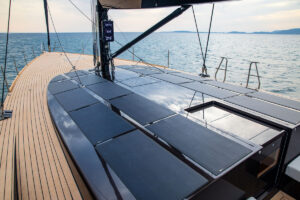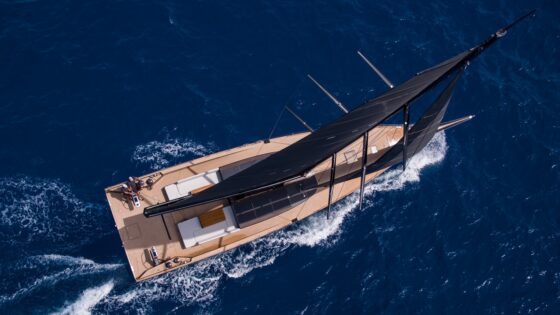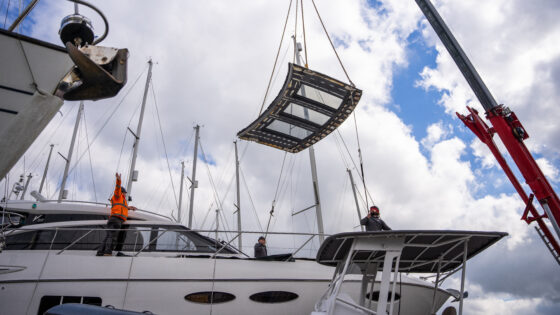
Sustainability: approach from the ground up

The industry finds itself at a sustainability crossroads – bolting on some solar panels, banning the odd hazardous substance and installing an electric motor are all very admirable but done in isolation could be viewed simply as ‘greenwash’. David Lewin, Global Marina Business Advisors (GMBA) UK, looks at opportunities for change in the industry.
A production process can only be said to be truly sustainable when it is economically sound, emission-free and has no negative environmental impact on the surrounding area and population. Rather than only looking at one aspect of a manufacturing process, sustainability therefore needs to become an all-encompassing state for builders in order to see real change.

Those taking a 360-degree approach to sustainability include Baltic Yachts in Finland, which has been working for some time on reducing its environmental impact. All the electricity used in its production facilities is locally produced, sourced from nearby windfarms or hydropower. Fossil fuels for heating the production facilities have been replaced by organic, pellet-fuelled furnaces. Since 2017, the company has also been tracking production-related waste, reducing unsorted waste to zero, and waste produced per labour hour by more than 10 per cent. Most production tooling is made from organic and recyclable materials and Baltic can substitute carbon fibre with naturally grown flax in structural laminates by up to 50 per cent in boats up to around 70ft.
Refit revolution
But what is the balance of green electric energy when a boat is made of non-recyclable elements and the energy expended, volatile organic compounds released from moulding, glueing and painting in the workshop and rare metals used in production are shipped from around the world?
In the automotive trade, it’s said that the most environmentally friendly car is the one you currently drive. Perhaps the same could be said for boats – making a refit the most eco-friendly option. At companies such as Setag Yachts, an owner can have a boat refurbished and restyled without having to build a new hull, superstructure and basic engineering – a considerable saving in money and resources.
Since its launch in April 2021, Setag Yachts has secured 32 design and refit projects, with yachts ranging from 33ft-88ft, and budgets of between £10,000 and £1m.

Image courtesy of Setag Yachts
“For people to enjoy new boat quality, there is nothing more sustainable than professional up-cycling. This will dramatically increase the longevity of the boats, therefore reducing the energies and raw materials needed to replace this product,” says Setag Yachts CEO, Chris Gates. Setag also relocated to Queen Anne’s Battery marina in Plymouth in March 2022, to be closer to its supply chain and ramp up business.
Shape of things to come
Reducing the environmental impact also starts with new thinking. Marina fees are traditionally based on overall length, so boats have become wider with chines for more buoyancy outboard and fuller bows for larger forecabins. These boats then require more power.
If berth fees were based on displacement (or a formula devised on length x beam), development of boats such as Clara Belle, a Nigel Irens design, built in ‘renewable’ cedar strip construction – long and thin, and now recently converted with an electric pod drive built into the rudder, could become the norm.
Speed is another consideration. A leisurely 12 knots, once so acceptable, could be the new normal. With the right hull design, as with Iren’s low displacement/length ratio (LDL) series it is also a speed easily attainable in displacement mode. These designs again lend themselves to low energy density/high-torque propulsion systems such as electric.
Iren’s latest project is an 8m LDL plywood launch suitable for electric propulsion or conventional petrol engines. But rather than construct it locally, he is supplying a total list of the requisite hardware plus a CNC programme to cut the 800 parts so that plywood and labour can be sourced close to wherever the boat is being built.
Though this isn’t necessarily feasible for other builders, looking at new ways to limit environmental impact does need to start from the drawing board. Those taking a 360-degree approach could benefit in the long term. The marine industry should find the good examples and emulate them now.
This article was first published in Marine Industry News‘ print edition, distributed at Southampton International Boat Show 2022.
